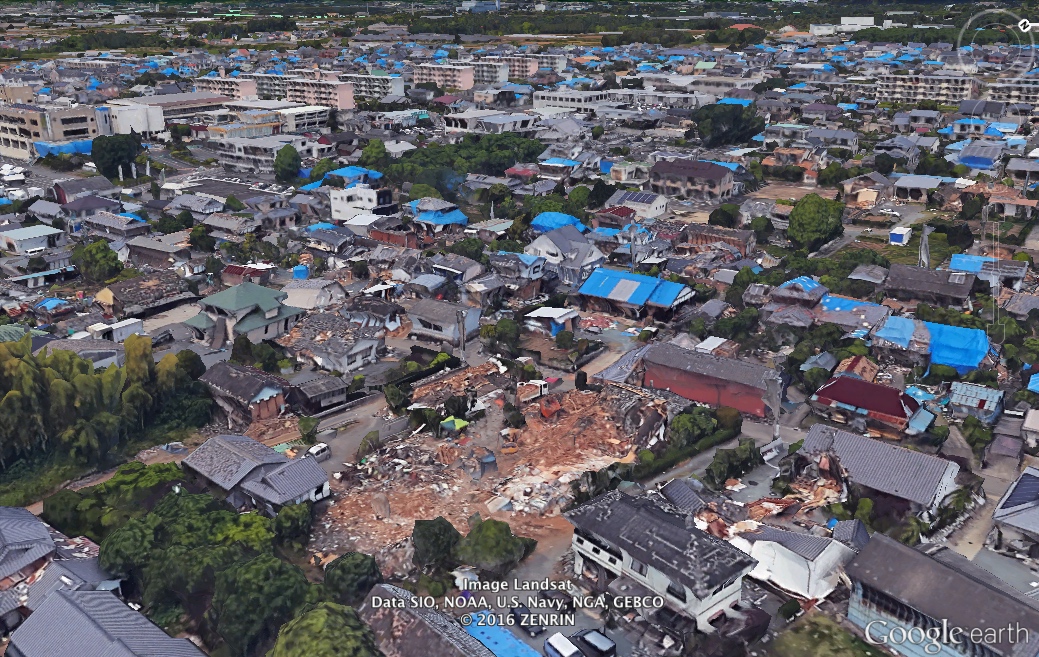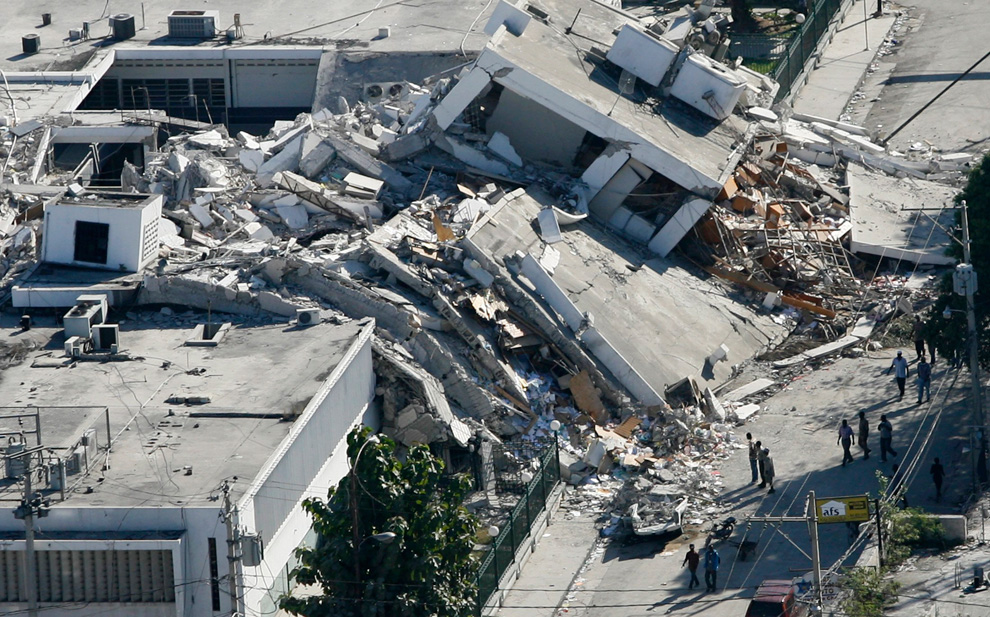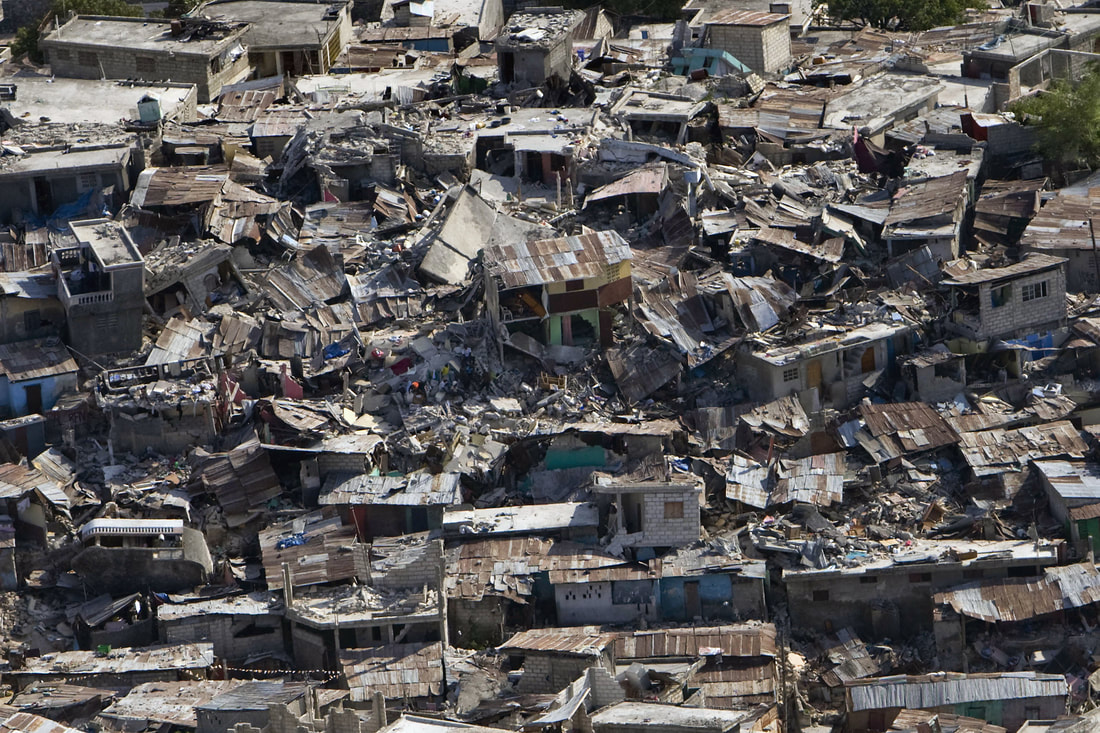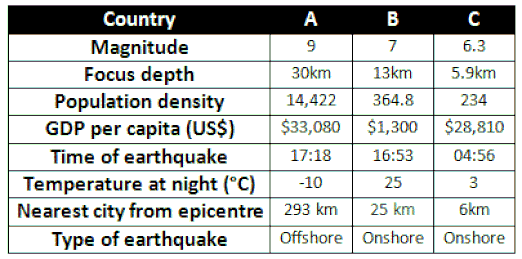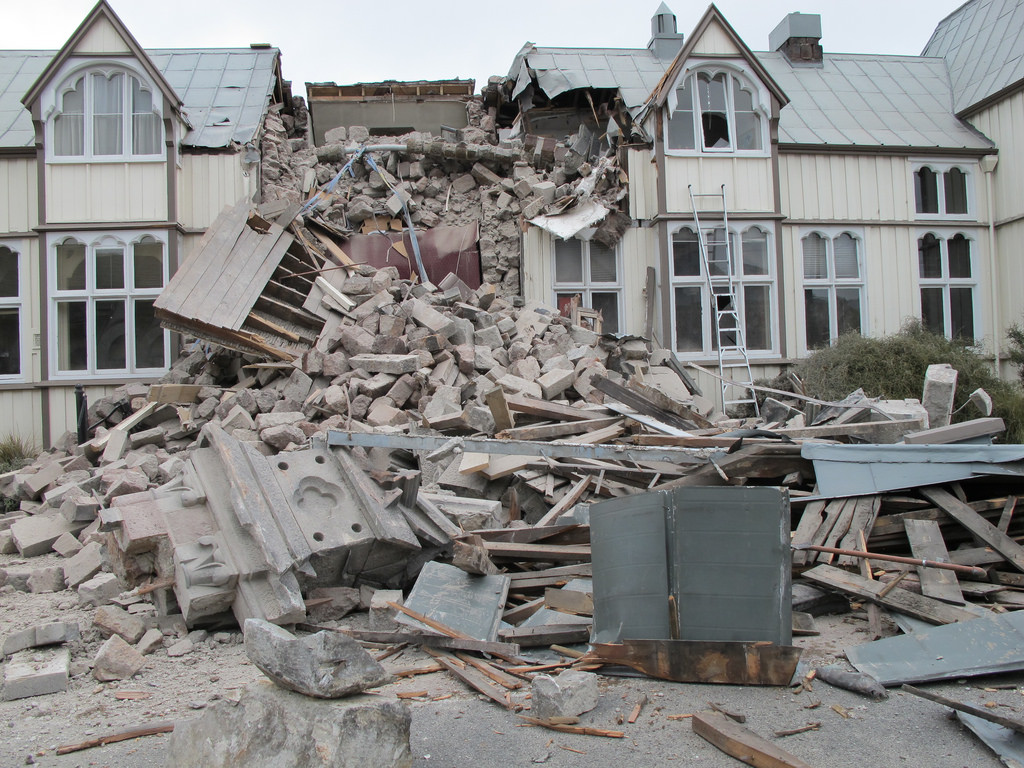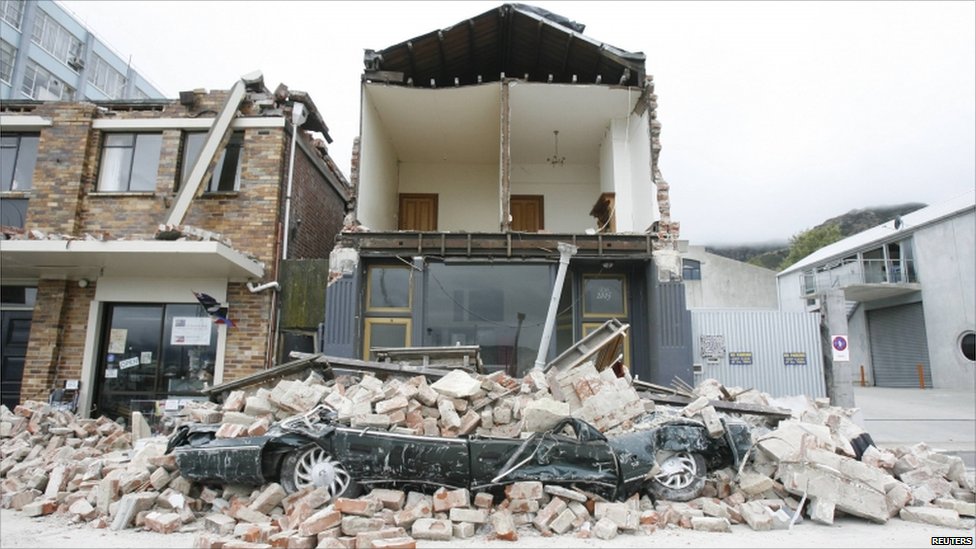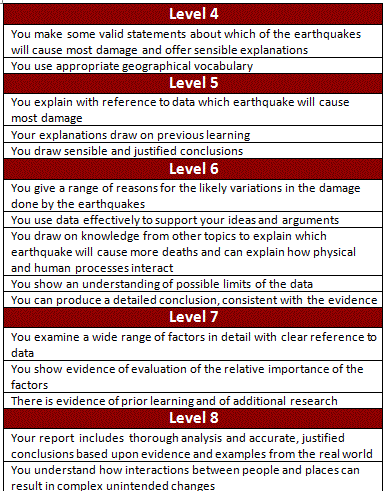-
MYP
- Home
-
IGCSE
- Course information
-
Physical: Hazardous environments
>
- Distribution of tectonic hazards
- Causes of tsunami
- Measuring earthquakes
- Earthquake case study 1: Haiti
- Earthquake case study 2: Christchurch
- Why do earthquakes do more damage in LICs than in HICs?
- How are volcanic eruptions measured?
- Tropical storms - distribution
- Causes of tropical cyclones
- Tropical cyclones - case study
- Why live in hazardous areas?
-
River Environments
>
- Hydrological cycle
- River basins
- Factors affecting river regimes
- Fluvial processes: erosion
- Fluvial processes: weathering and mass movement
- Fluvial processes: transportation and depositon
- River features and their formation
- How rivers change from source to mouth
- Uses of water
- Water pollution
- Water supply
-
IBDP
-
Changing population
>
- Global patterns of economic development
- Physical and human factors affecting global population distribution
- Case study 1: China
- Case study 2: Niger
- Demographic transition
- Megacity growth
- Forced migration and internal displacement
- Ageing populations
- Pro-natalist and anti-natalist policies
- Gender equality policies
- Trafficking policies
- The Demographic Dividend
-
Global climate vulnerability and resilience
>
- Atmospheric system
- The energy balance
- Changes in the energy balance
- The enhanced greenhouse effect
- Climate Change and the Hydrosphere, Atmosphere and Biosphere
- Impacts of climate change on people and places
- Disparities in exposure to climate change risk and vulnerability
- Government-led adaptation and mitigation strategies
- Civil society and corporate strategies
-
Global resource consumption and security
>
- Progress towards poverty reduction
- Measuring trends in global consumption
- Global patterns and trends in the availability and consumption of water
- Global patterns and trends in the availability and consumption of land/food
- Global patterns and trends in the availability and consumption of energy
- Water food and energy nexus
- Recycling and waste
- Malthus vs Boserup
- Resource Stewardship strategies
- Sustainable Development Goals
-
Freshwater - drainage basins
>
- The drainage basin as a system
- How rivers change from source to mouth
- River discharge
- River processes
- River landforms
- Factors affecting flood risk
- Attempts at flood prediction
- Flood mitigation
- Flood mitigation case studies
- Water scarcity
- Agricultural activities and water quality
- Pressures on lakes and aquifers
- Internationally shared water and conflict
- Water management: participation of local communities
- Dams as multi-purpose schemes
- Water management: Integrated Drainage Basin Management (IDBM)
- Managing wetlands
-
Leisure, Sport and Tourism
>
- Growth and purpose of leisure time
- Categories of tourism and sport
- Economic development and participation
- Factors affecting personal participation
- Factors affecting growth of tourism hotspots
- Spheres of influencee
- Factors affecting a national sports league
- Festivals
- Niche national tourism strategies
- Role of TNCs
- Tourism as a national development strategy
- International sporting events
- Consequences of unsustainable growth
- Sustainable tourism
- Future international tourism
- Political and cultural influences on sport
- Extended Essay in Geography >
- Skills/concepts >
-
Changing population
>
- Geography and ToK
- Theory of Knowledge
Which earthquake will do the most damage and why?
Below, you will find LOTS of fantastic information about the locations where three earthquakes occurred. Use this information to write a formal report which follows the structure here:
INTRODUCTION
Introduce the question: Which earthquake will cause the most deaths?
For example - Earthquakes cause many deaths every year in many countries around the world. However it is not as simple as looking at magnitude as there are many other factors that can lead to an increase in deaths such as………..In this essay these factors will be analysed to explain which earthquake caused the most deaths.
MAIN ARGUMENTS: Use PEEL
This is the main section of your essay/report. Here you should have a series of paragraphs which explore which earthquake you will do the most and the least damage and why. Each paragraph could/should look at a different factor affecting the amount of damage done and how that factor will influence each location.
Point: We would expect that magnitude will have a significant effect on the damage done by each quake.
Evidence: It is likely that country A caused the most deaths because the magnitude was 9 compared to B and C which was 7 and 6.3 respectively.
Explanation: Why is this factor important? Explain how and why it will affect the damage. You could look at both deaths/injuries and economic damage.
Link: Refer back to the main question if you haven't already. How does this affect the "big picture"? How might the factor influence/interact with other influences?
A high level answer will address many of the factors in detail and may also bring in evidence from real earthquakes as exemplars!! It is likely to include integrated and annotated diagrams to support the points made.
CONCLUSION
State which country you think will cause the most deaths based on the evidence that you have analysed and summarise your reasons for thinking this.
A high level answer would consider if there is any other data you would need to look at, or information about the country you would need to know, to make the analysis more detailed.
INTRODUCTION
Introduce the question: Which earthquake will cause the most deaths?
For example - Earthquakes cause many deaths every year in many countries around the world. However it is not as simple as looking at magnitude as there are many other factors that can lead to an increase in deaths such as………..In this essay these factors will be analysed to explain which earthquake caused the most deaths.
MAIN ARGUMENTS: Use PEEL
This is the main section of your essay/report. Here you should have a series of paragraphs which explore which earthquake you will do the most and the least damage and why. Each paragraph could/should look at a different factor affecting the amount of damage done and how that factor will influence each location.
Point: We would expect that magnitude will have a significant effect on the damage done by each quake.
Evidence: It is likely that country A caused the most deaths because the magnitude was 9 compared to B and C which was 7 and 6.3 respectively.
Explanation: Why is this factor important? Explain how and why it will affect the damage. You could look at both deaths/injuries and economic damage.
Link: Refer back to the main question if you haven't already. How does this affect the "big picture"? How might the factor influence/interact with other influences?
A high level answer will address many of the factors in detail and may also bring in evidence from real earthquakes as exemplars!! It is likely to include integrated and annotated diagrams to support the points made.
CONCLUSION
State which country you think will cause the most deaths based on the evidence that you have analysed and summarise your reasons for thinking this.
A high level answer would consider if there is any other data you would need to look at, or information about the country you would need to know, to make the analysis more detailed.
1. Overview data
2. Country specific background information
|
Country A
|
Country B
• It is the third hungriest country in the world • The richest 1% of the population controls nearly half of all the wealth • The poorest country in the western hemisphere • One of the poorest countries in the world • Has a life expectancy of 54 • Adult literacy is about 62% • 78% of people live on less than $2 US per day |
Country C
|

